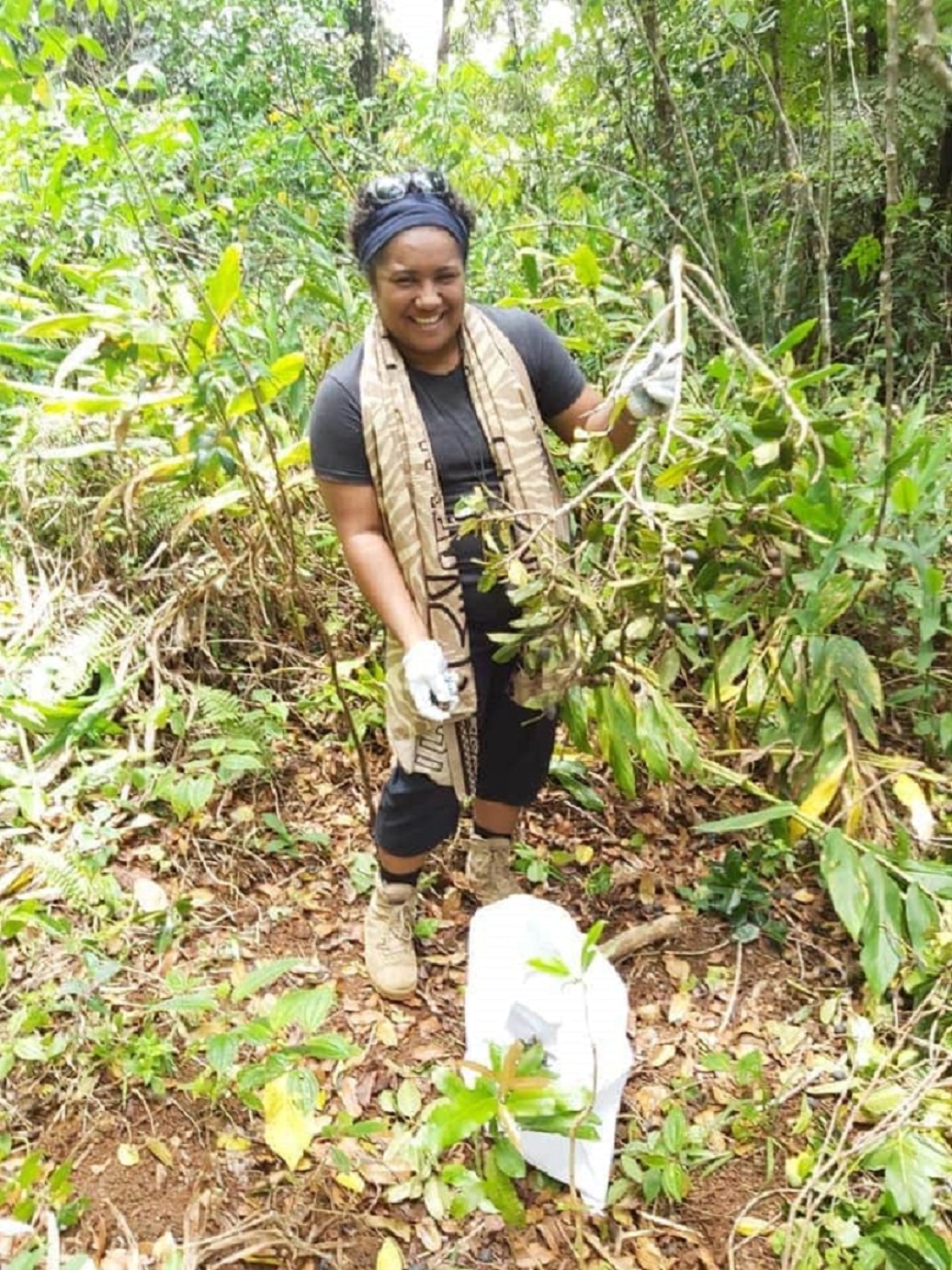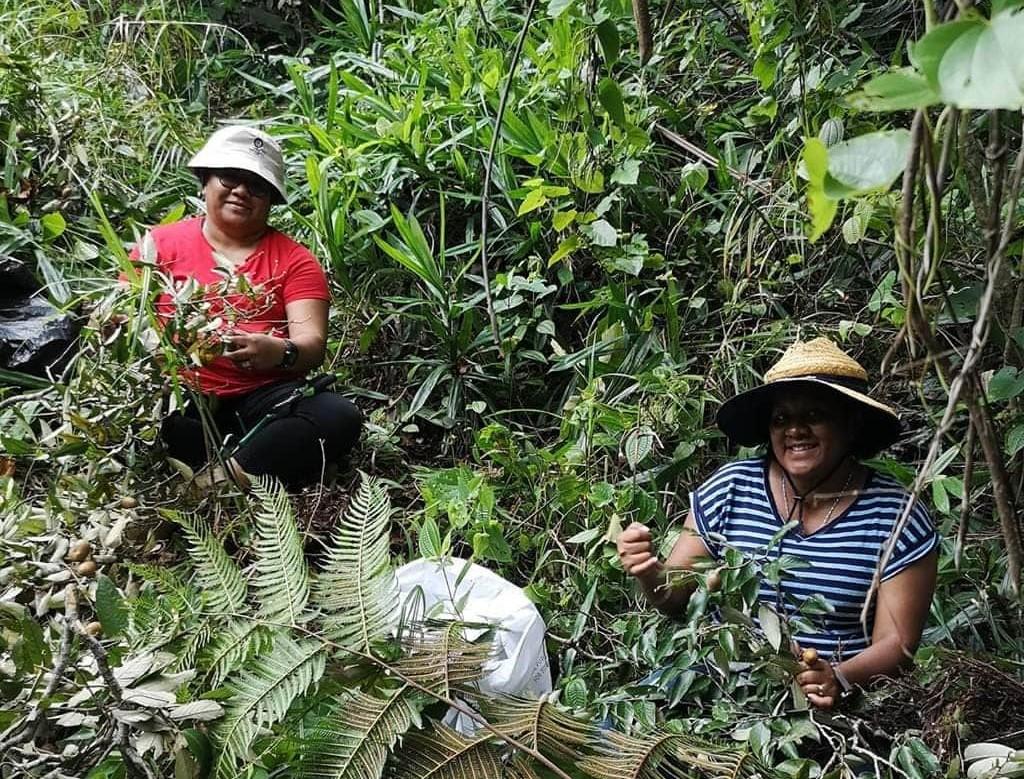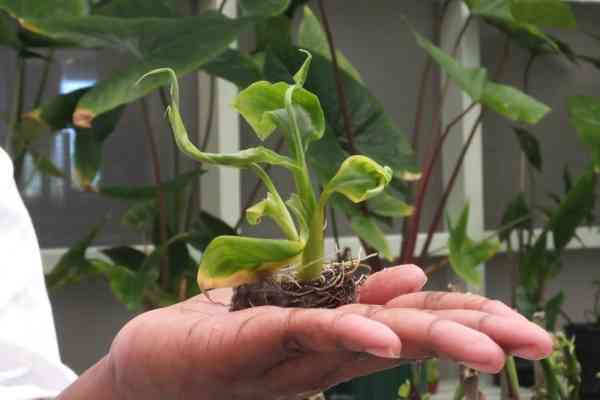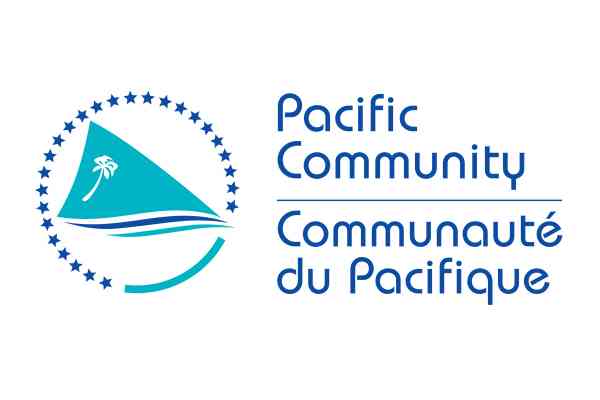Caption: Seed Technician Elina Nabubuniyaka-Young (in red shirt) collecting tree seeds in the field.
Seed Technician Elina Nabubuniyaka-Young abides by a saying when collecting seeds in the Pacific region: get as much information as possible.
“If the seeds have no information behind them – they are useless,” she says emphatically.
A seed technician at the Pacific Community’s (SPC) Centre for Pacific Crops and Trees (CePaCT), under the Ridge to Reef project, Elina’s work revolves around seed technology, conservation techniques, and seed bank management.
She ensures matured seeds are correctly identified, the DBH (diameter at breast height) of the sampled tree is taken, and GPS coordinates recorded, before collection begins.
The seeds are then tested for viability before being kept at the regional seed bank, CePaCT.
At a time when pandemics, pests and diseases, and extreme weather events are rampant, such work has never been more relevant.
Scattered far and wide over the largest expanse of ocean on earth, Pacific island countries and territories rely heavily on food imports, tourism, remittances and, revenue from labour mobility.
The COVID-19 pandemic changed all that after it crippled the global and local supply chains, which has impacted the region’s food system.
Most rural populations, while able to produce and consume their own food, rely on imported fertilisers and livestock feed. Without this resource domestic production is at risk.
Added to the island countries’ vulnerability are constant threats of natural disasters and climate change.
CePaCT contributes to food security by providing crops that can mature faster and giving better nutritional varieties to member countries.
Its vault contains more than 2000 accessions of 17 crops and over 1000 taro accessions - the largest collection in the world.
“I grew up within the Department of Forestry compounds in Colo-i-Suva (Fiji),” says Elina. “I observed the process in which seeds were collected and raised in nurseries for distribution to local communities. At SPC, I can do the same at a regional level.”
Since 2012, Elina has collected over 300 kilograms of seeds from Fiji, Samoa, Tonga, Vanuatu, and the Solomon Islands.
“If we’re out in the field for one week, we ensure that the seeds collected are air-dried and kept in breathable bags and not closed plastic bags that can cause the seeds to ‘sweat’ or get mouldy and deteriorate,” describes Elina.
“When we return to the lab, we start processing the seeds, for example with Mahogany seeds, which are kept in a pod, we either wait for the pod to crack open by itself, or we use a rock or hammer. The wings (impurities) are removed and the seeds accessed.”
A viability test on the seed is carried out at the CePaCT lab to see whether the seed batch would grow or germinate. From there, it is dried down more before being put in cold storage at a temperature range of 3-7 degrees Celsius. The seeds are distributed to member countries upon request.

The experience has been enriching, says Elina.
“I have grown a lot in terms of capacity building and knowledge sharing. The local forestry sector was mainly male-dominated when I first started, but over the years, there has been a lot of changes. More women are joining in the forestry field.”
Elina’s message to you women is to be bold. “If you have a passion for something and think it will help our people - go for it.”
The regional seed bank, CePaCT, is supported by Australia, through the Department of Foreign Affairs and Trade and the Australian Centre for International Agricultural Research (ACIAR).


